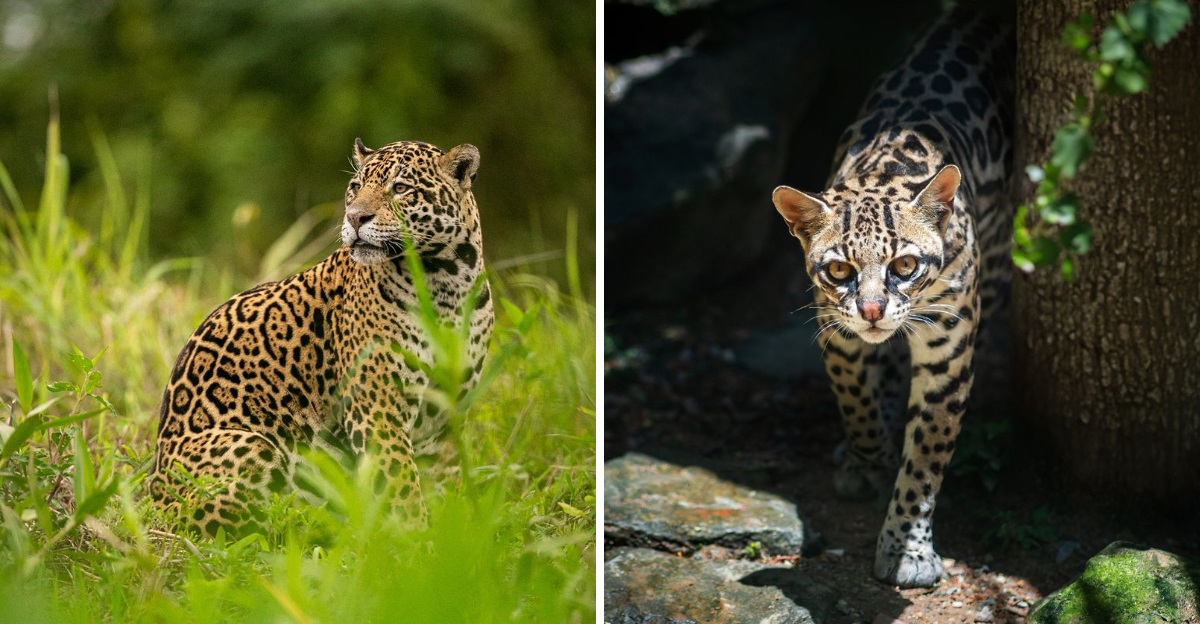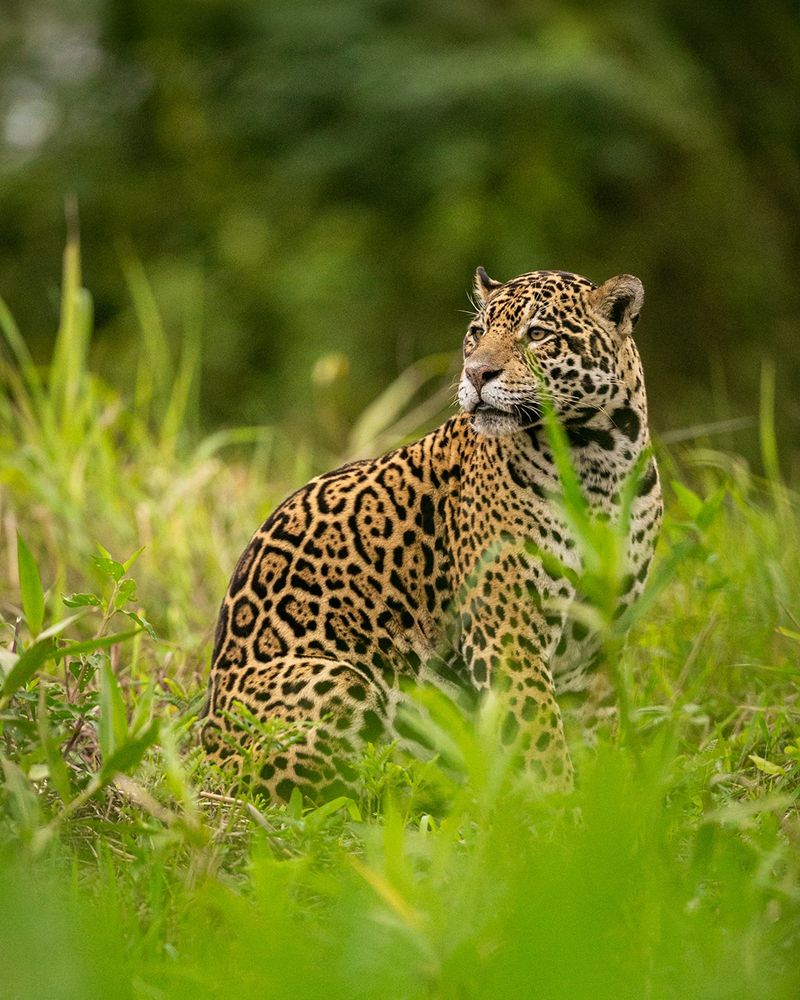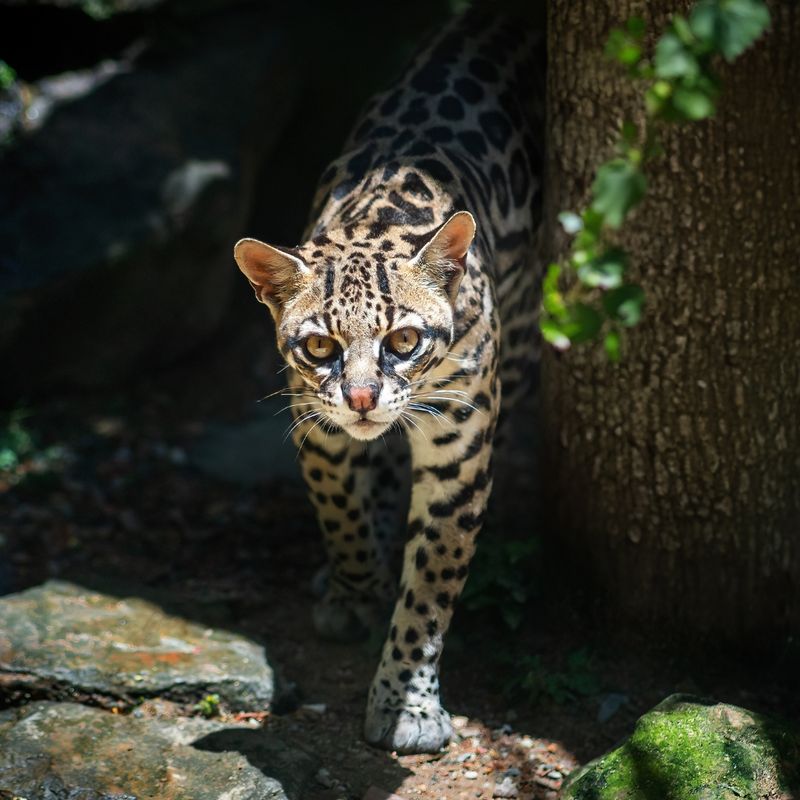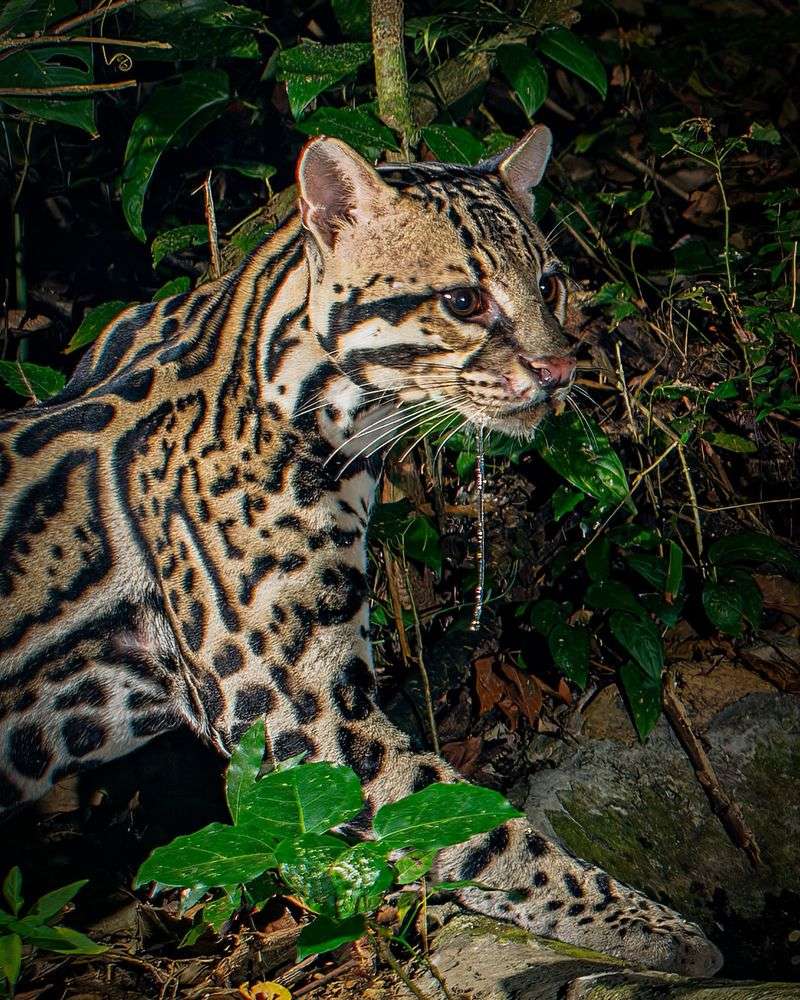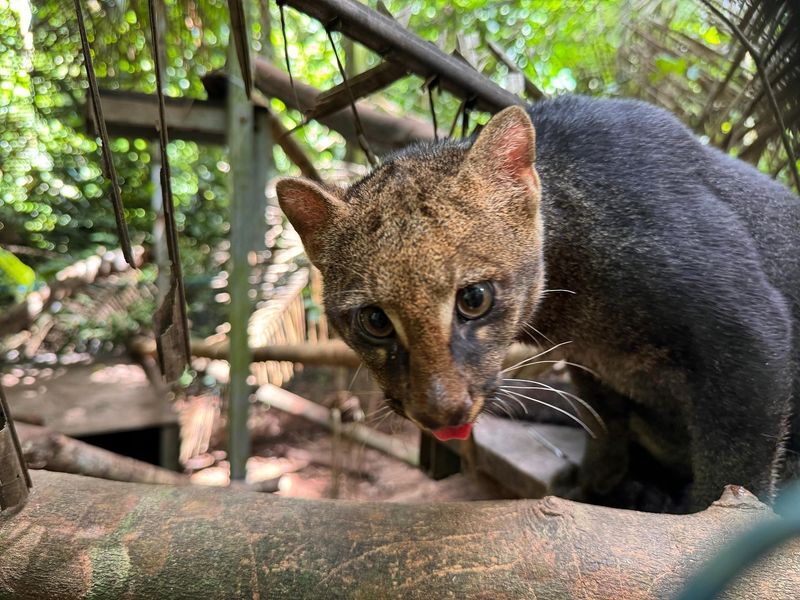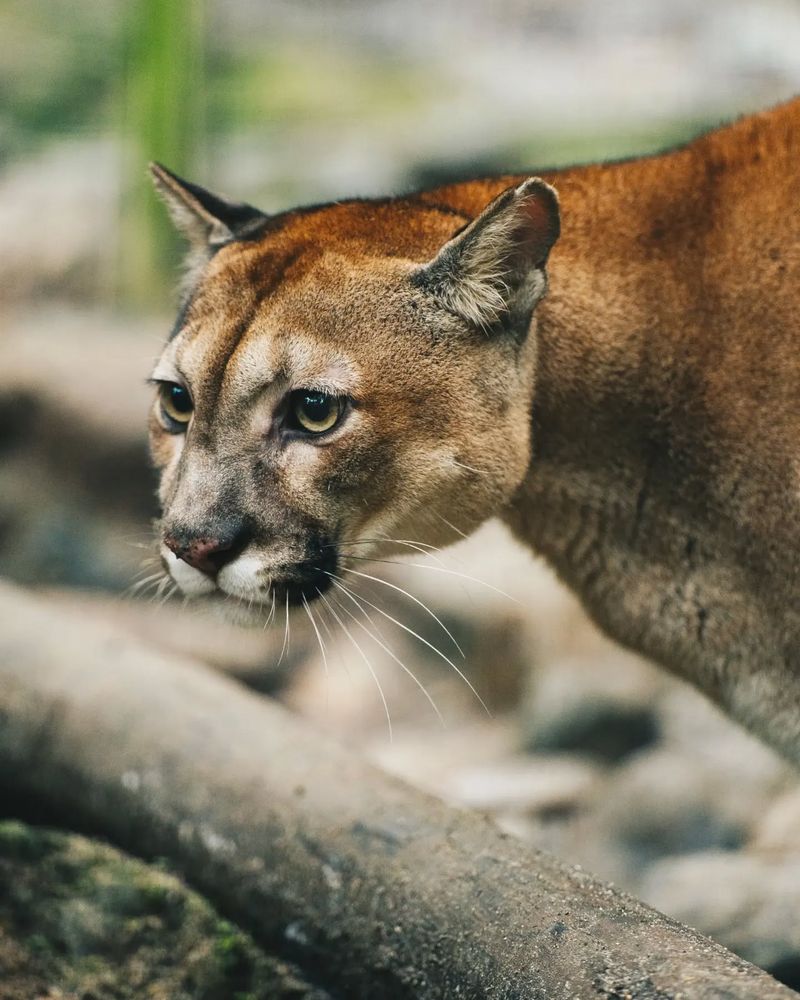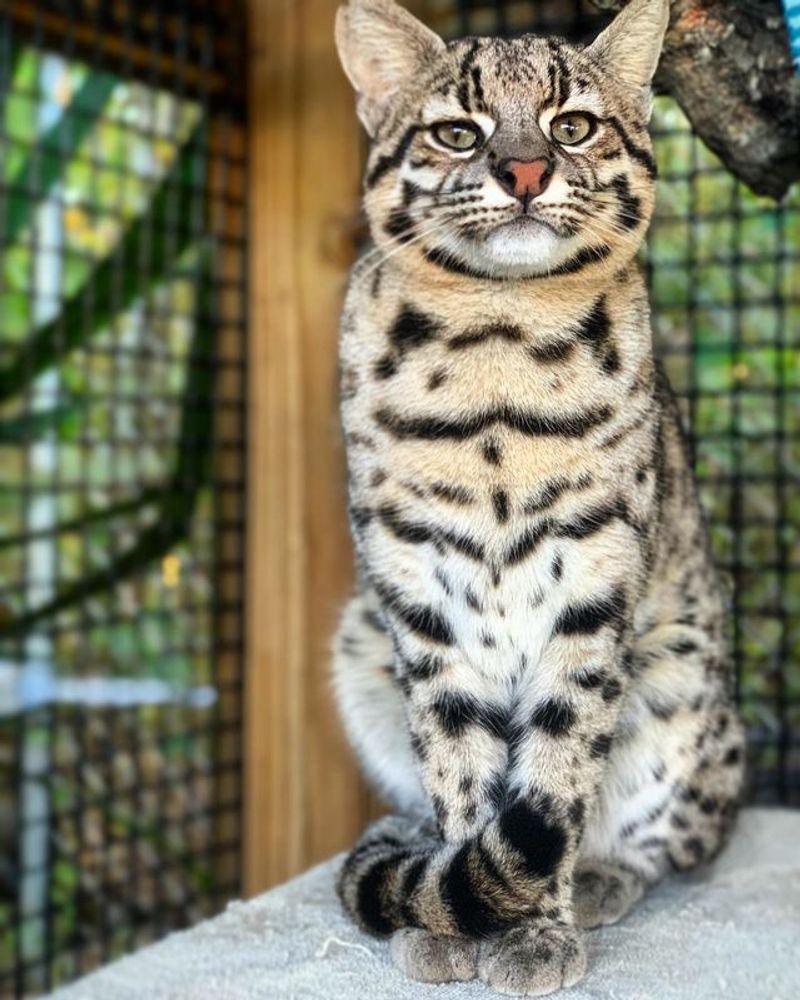📖 Table of Content:
Hidden deep within the vibrant, tangled heart of the Amazon rainforest thrives a secret society of wild cats—masters of stealth, agility, and survival. From the mighty jaguar, king of the jungle, to tiny, elusive climbers that vanish among the treetops, these felines have honed extraordinary skills over millennia.
Silent hunters by night and day, they play a vital role in keeping the delicate balance of the rainforest’s ecosystem alive and thriving.
Each species tells a story of adaptation and resilience, shaped by the dense foliage, rushing rivers, and shifting shadows of their home. Whether prowling the forest floor, leaping through the canopy, or swimming in winding streams, these cats embody the wild spirit of the Amazon—elusive, powerful, and endlessly fascinating.
1. Jaguar
Muscular and powerful, the jaguar reigns supreme as the Amazon’s largest cat. Unlike other big cats, jaguars actually enjoy swimming and often hunt caimans and fish in rivers! Their uniquely strong jaws can pierce turtle shells and crocodilian armor with ease.
Jaguars have distinctive rosette patterns – black spots arranged in rings that look like roses. Each jaguar’s pattern is completely unique, like a human fingerprint. Their golden-yellow to reddish-brown coat helps them blend perfectly with dappled sunlight filtering through the canopy.
2. Ocelot
Ocelots dazzle with their beautiful coats – cream or tawny fur decorated with black spots and stripes that create the perfect camouflage. These medium-sized cats are incredible climbers, leaping between branches with remarkable agility while hunting birds, monkeys, and small mammals.
At just twice the size of a house cat, ocelots pack serious hunting skills into a compact frame. Their large eyes provide excellent night vision, making them primarily nocturnal hunters. During daylight hours, they rest in hollow trees or dense vegetation.
Despite their wild nature, ocelots were once popular exotic pets in the 1960s, contributing to their endangered status today. Thankfully, conservation efforts are helping their populations recover.
3. Margay
Few felines match the margay’s extraordinary tree-dwelling abilities. These cats can rotate their ankle joints 180 degrees, allowing them to run headfirst down trees like squirrels! Their long tails provide perfect balance as they leap between branches in the rainforest canopy.
Margays have been observed mimicking the calls of baby monkeys to lure curious adults within striking distance. This clever hunting strategy showcases their remarkable intelligence. Smaller than ocelots but with similar spotted coats, margays are often confused with their cousins.
Highly specialized for arboreal life, these cats rarely descend to the forest floor, making them one of the most elusive Amazon residents. Their entire lives unfold in the treetops, from hunting to mating to raising young.
4. Jaguarundi
With its sleek body and short legs, the jaguarundi looks more like an otter than a typical wild cat. Unlike its spotted rainforest cousins, this unusual feline sports a solid coat ranging from reddish-brown to charcoal gray. Young jaguarundis can even change their color as they mature!
Early settlers called them ‘otter cats’ because of their streamlined shape and comfort around water. Jaguarundis hunt during daylight hours, a rare habit among wild cats. They stalk through dense underbrush, capturing birds, small mammals, and reptiles with lightning-quick pounces.
These vocal cats communicate with at least 13 different calls, including purrs, whistles, and chatters. Their diverse vocabulary helps maintain territories and coordinate during mating season.
5. Puma
Known also as cougars or mountain lions elsewhere, Amazonian pumas have adapted perfectly to the rainforest environment. Their tawny coats blend seamlessly with both fallen leaves and dappled sunlight, making them nearly invisible as they stalk prey. These powerful cats can leap 40 feet horizontally and 15 feet vertically in a single bound!
Pumas are solitary hunters with enormous territories spanning up to 100 square miles in the Amazon. They’re incredibly versatile, hunting everything from deer and capybaras to monkeys and birds. Unlike jaguars, pumas cannot roar – they purr like house cats when content.
Amazingly adaptable, these cats survive in rainforests, mountains, and deserts across the Americas, making them the most widespread native land mammal in the Western Hemisphere.
6. Oncilla
Resembling a tiny leopard, the oncilla weighs just 5-8 pounds yet possesses all the hunting prowess of its larger relatives. Its gorgeous spotted coat features black rosettes and stripes against a yellow-ochre background. These little hunters primarily target rodents, small reptiles, and birds that other cats might ignore.
Oncillas move with incredible stealth through both trees and ground cover. Their partially retractable claws help them maintain grip while climbing, but don’t fully withdraw like those of domestic cats. Most active during twilight hours, oncillas use their exceptional night vision to spot movement in near-darkness.
Sadly, these beautiful mini-cats face serious threats from habitat loss and illegal pet trade. Their small size makes them particularly vulnerable to larger predators, including other wild cats.
7. Geoffroy’s Cat
Often overlooked among Amazon’s wild cats, Geoffroy’s cat brings its own unique charm to the rainforest. About the size of a domestic cat, it sports a distinctive coat of black spots and bands against a background that varies from silvery-gray to yellowish-brown. Black tear-mark stripes run from its eyes to its cheeks, giving it a perpetually alert expression.
These cats are swimming enthusiasts, happily crossing streams and hunting fish along riverbanks. Their diet includes an impressive variety of small creatures – from rodents and birds to frogs, fish, and even insects. Remarkably adaptable, they thrive in both pristine forests and areas recovering from human disturbance.
Geoffroy’s cats are prolific climbers but spend much of their time hunting on the ground. They communicate through scent marking, scratching trees, and leaving scat in prominent locations.
